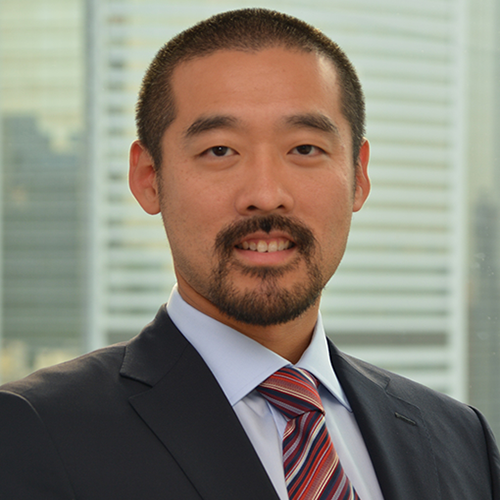Société Générale has picked up the Best Warrant Provider award at the SRP Apac Awards 2021, which was announced on 16 June.
As a long-established issuer in Hong Kong’s listed structured products market, the French bank has capitalised on the ever growing callable bull/bear contract (CBBC) market, which saw its turnover surpassing the turnover of derivative warrants (DWs) for the first time in 2020.
Société Générale took the largest CBBC market share at 16.5% by turnover (HK$407.5 billion) and 19% by issuance (7,400) in the year.
There is abundant choices in terms of product terms, such as strikes and knockout levels - Keith Chan
“As the implied volatility went up following the March market crash, derivative warrants [DWs] became less attractive due to the lowered leverage,” Keith Chan (pictured), head of cross asset listed distributions for Apac at Société Générale, told SRP. “A number of investors then turned to CBBCs, which maintained a higher leverage depending on their strike, spot and knockout levels.”
After the Hang Seng Index (HSI) slumped by 4.3%, or 1,121.6 points, on 9 March 2020 – marking its biggest intraday decline in two years - a number of bulls got knocked out while bears remained at a distance from the spot level. “We had to fill in the gap with new CBBCs,” said Chan.
The investment bank has retained its top position during the first six months of 2021 on the back of 4,500 CBBC issuances with a turnover of HK$214.5 billion, presenting a market share of 18% and 21%, respectively.
Underlying assets
The year of 2020 saw a wider variety of underlying stocks deployed via DWs and CBBCs driven by a demand for Chinese tech giants such as Alibaba, Meituan, and XiaoMi.
Prior to that, Tencent shares had stood out as the most actively traded underlying stock making up around 20% to 30% of the total turnover in the DW markets, according to Chan.
“Hong Kong single stocks are more frequently traded as underlying assets, though indices remain dominant,” he said. “There is abundant choices in terms of product terms, such as strikes and knockout levels.”
During the past 18 months, Société Générale launched seven DWs on NetEase, seven on JD.com, five on Kuaishou Tech, nine on Baidu and six on Bilibili on their listing dates as most issuers moved to cash in on a series of tech IPOs in Hong Kong SAR. In addition to tech stocks, electronic cars like BYD was another asset of focus along with oil, according to Chan.
The number of single Hong Kong stocks available via these two product types varies significantly – 431 for DWs and 30 for CBBCs, according to the bourse’s latest quarterly list of eligible assets.
In addition, DWs are allowed to track additional 22 assets across Hong Kong equity indices, overseas stocks and indices, FX and commodities while CBBCs are limited to four Hong Kong equity indices and four overseas stock indices.
“Investors may also choose DWs when the underlying asset is not available for CBBCs,” said Chan, adding that CBBCs suit short-term trading with high leverage while DWs apply to medium to long-term views with no knockout option.
The French bank has seen a shrinking DW market share by turnover since 2019 - reaching two percent or HK$45 billion in 2020. That rebounded to six percent, or HK$80 billion, in the first half of 2021, although the number of new DWs dropped to 4,000 from 5,000 year-on-year or compared with H2 2020.
“The bullish market from Q3 20 to Q1 21 has certainly attracted more retail participation. An increasing volatility in the stock market will also raise the participation,” said Chan, adding that equity indices have become the most popular assets since Q2 21 because they’re range bound and provide opportunities for short-term trading.
In July 2020, the Hong Kong exchange shortened the listing cycle of structured products from five days to three days, which has “obviously boosted the issuance”.
“In some European markets, it’s one day or even intra-day. Thus, we as a major issuer in HK are supportive of co-building an even more efficient listing process with all market participants,” said Chan.
Chan also noted that the inclusion of guarantors of listed structured products in a sanction framework under HKEX’s listing rules had little impact on the bank’s issuance and market making quality.
Last month, the bourse said that it planned to add ESG benchmarks developed by Hang Seng Indexes and MSCI for derivative and possibly structured product issuance.
“To be an eligible underlying index for DWs or CBBCs, investors must be familiar with it and have short-term views to trade with leverage,” said Chan. “ESG investment is generally a longer-term buy and hold.”
Investor behaviour
As a veteran in the listed structured product market, Chan has witnessed the evolvement of the industry during the past 15 years.
“Investors of DWs and CBBCs used to believe that a high product turnover represented a good quality in the 2000s,” he said. “They now are quite mature and highly value the liquidity provider service.”
The focus shift prompted Société Générale to change its marketing strategy four years ago – the bank launched a liquidity provision quality (LPQ) index for each product, which measures the bid-ask spread, liquidity and stability and is accessible on the bank’s warrant website.
To further enhance investors’ knowledge, the bank turned to educational technology (EdTech) during the pandemic and held more than 50 webinars as well as 130 live webcasts and several simulation games in partnership with local brokers.
According to Chan, Hong Kong investors are getting more sophisticated in anticipation to participate in more types of listed products such as daily leverage certificates (DLCs), which are on HKEX's roadmap.
“The time is ripe for us to introduce such products in Hong Kong SAR,” said Chan.
